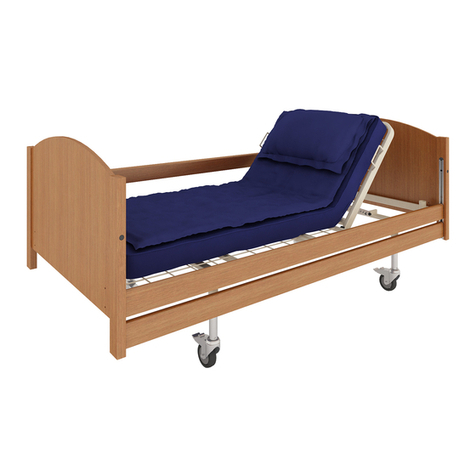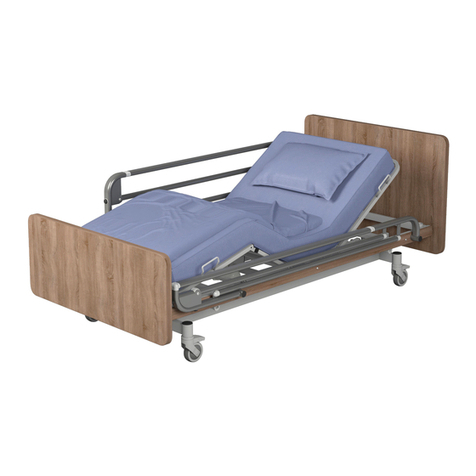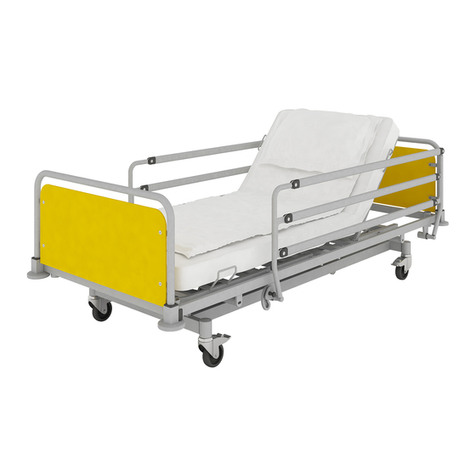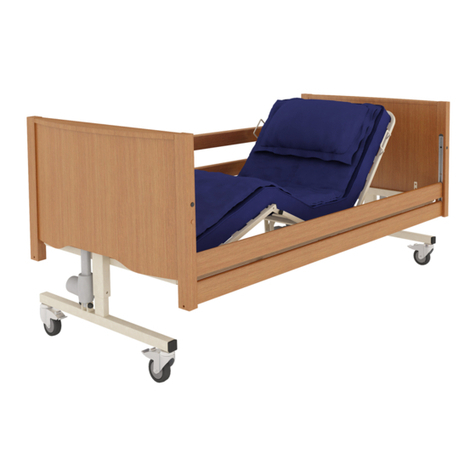3
CONTENTS
1. INTRODUCTION ....................................... 4
1.1. CONTACT........................................... 4
1.2. TO WHAT IT CONCERNS........................ 4
1.3. FEATURES.......................................... 5
1.4. USE .................................................. 5
1.5. CONTRAINDICATIONS........................... 6
2. GENERAL WARNINGS .............................. 7
2.1. GENERAL WARNINGS ........................... 7
3. TRANSPORT AND STORAGE .................. 11
4. SYMBOL DEFINITIONS ........................... 13
5. PARTS .................................................... 15
5.1. PARTS SPECIFICATION ........................ 15
6. BED ASSEMBLY AND PREPARING FOR USE
................................................................... 16
6.1. REMOVAL FORM THE TRANSPORT STAND16
6.2. ASSEMBLING THE BED ........................ 17
6.3. FITTING ELECTRICAL SYSTEM................ 18
6.3.1. HOLDER ARRANGEMENTS ON
POWER CABLE................................................ 19
6.4. FITTING THE SIDE RAILS ...................... 20
6.5. CHECKING THE BED............................ 22
7. TRAINING............................................... 23
8. FIRST USE............................................... 24
8.1. GENERAL SAFETY............................... 24
8.2. PREPARING FOR START....................... 25
8.3. BRAKE SYSTEM ................................. 26
8.4. SIDE RAILS AND MATTRESSES............... 26
8.4.1. MATTRESS THICKNESS .............. 26
8.4.2. OPERATING THE SIDE RAILS ....... 26
8.5. ELECTRICAL OPERATION...................... 27
8.5.1. HANDSET LOCATION.................28
8.5.2. 9-BUTTON HANDSET OPERATION 29
8.5.3. HANDSET LOCKOUT..................30
8.6. LEG SECTION.....................................30
9. ASSEMBLY ONTO THE TRANSPORT
STAND........................................................ 32
10. POWER FAILURES ................................ 34
10.1. EMERGENCY LOWERING BACKREST AND
LEG SECTIONS.................................................34
11. DECONTAMINATION............................35
12. MAINTENANCE .................................... 37
12.1. GENERAL MAINTENANCE..................37
12.2. SERVICE LIFE ...................................38
12.3. FAULTY FINDING..............................39
13. DISPOSAL OF PARTS ............................40
14. ELECTROMAGNETIC COMPATIBILITY
(EMC) .........................................................41
15. SPECIFICATION..................................... 42
15.1. BED DATA ......................................42
15.2. MAXIMUM LOAD ............................42
15.3. TECHNICAL DATA OF SIDE RAILS..........42
15.4. ELECTRICAL DATA ............................44
16. ACCESSORIES ....................................... 45
16.1. MATTRESSES AND SIDE RAILS.............45
16.2. LIFTING POLE ..................................46
17. WARRANTY.......................................... 48
17.1. WARRANTY TERMS AND CONDITIONS..48
18. REPAIRS AND SERVICING.....................50
19. REMARKS AND NOTES......................... 51

































